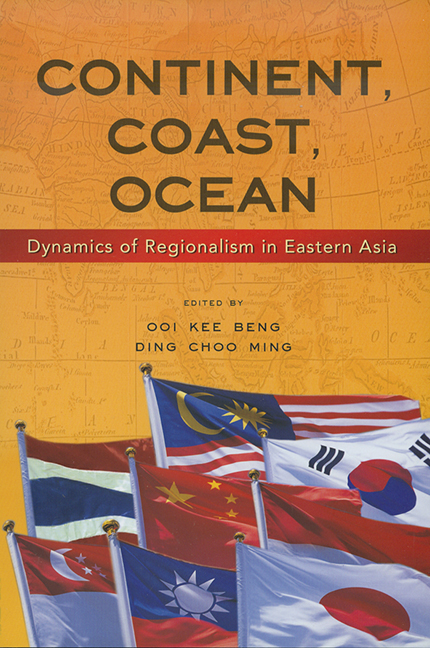Book contents
- Frontmatter
- Contents
- Foreword by Shamsul A.B.
- Contributors
- Introduction
- PART ONE PUTTING JAPANESE IMPERIAL HISTORY TO REST
- PART TWO THE ECONOMICS OF REGIONAL INTEGRATION
- PART THREE INTER-REGIONALISM AND REGIONALISM
- PART FOUR NEW KNOWLEDGE, NEW PROBLEMS, NEW SOLUTIONS
- 9 Reinventing Traditional Values for Our Future: A Malaysian Organizational Response
- 10 The Dynamic Growth Order in East and Southeast Asia: Strategic Challenges and Prospects in the Post-9/11 Era
- 11 Islam in Asia: The Way Ahead
- Index
10 - The Dynamic Growth Order in East and Southeast Asia: Strategic Challenges and Prospects in the Post-9/11 Era
from PART FOUR - NEW KNOWLEDGE, NEW PROBLEMS, NEW SOLUTIONS
Published online by Cambridge University Press: 21 October 2015
- Frontmatter
- Contents
- Foreword by Shamsul A.B.
- Contributors
- Introduction
- PART ONE PUTTING JAPANESE IMPERIAL HISTORY TO REST
- PART TWO THE ECONOMICS OF REGIONAL INTEGRATION
- PART THREE INTER-REGIONALISM AND REGIONALISM
- PART FOUR NEW KNOWLEDGE, NEW PROBLEMS, NEW SOLUTIONS
- 9 Reinventing Traditional Values for Our Future: A Malaysian Organizational Response
- 10 The Dynamic Growth Order in East and Southeast Asia: Strategic Challenges and Prospects in the Post-9/11 Era
- 11 Islam in Asia: The Way Ahead
- Index
Summary
INTRODUCTION: GLOBALIZATION AND POLITICAL STABILITY IN EAST AND SOUTHEAST ASIA
The East Asian region as a whole (both Northeast and Southeast Asia) has evidenced a remarkable growth pattern since the late 1980s and early 1990s — a trend that was somewhat deflected by the Asian Financial Crisis in the late 1990s. Economic recovery and growth appear to have come back on track after the turn of the century. However, this most recent period of growth has being punctuated by the SARS epidemic (2003), and most recently, by the outbreak of bird flu in East Asia. Will these negative developments in the health sector affect overall economic growth and political stability as well as regional security? There is no doubt that the 11 September 2001 (9/11) terrorist attacks in the United States did and continues to have an impact on external and regional perceptions and policies regarding Asia-Pacific security. In any case, the more interesting feature of the post-9/11 scenario lies along two dimensions: First, the nature of initiatives and responses by East Asian (especially ASEAN) governments to the terrorist threat, and second, the glaring inability of international terrorism to overthrow or significantly alter the political, social, and territorial status quo in the region.
Globalization understood in terms of its totalizing economic, political, social and cultural impact on human civilization is a fairly recent phenomenon that commenced with the advance of Western imperialism and territorial conquest in the latter half of the nineteenth and early twentieth centuries. The non-Western world was arguably globalized by the imperial activities of Western powers and also Japan, whose emergence as a military-industrial power under the Meiji restoration gave the “Land of the Rising Sun” the same imperial energy and drive that had characterized the Europeans. Nevertheless, in the aftermath of the two world wars, the world community essentially accepted the nation-state process of globalization, and symbolized the post- World War II status quo by establishing the United Nations in 1945. Henceforth, unilateral ambitions were to be moderated by multi-lateral impulses through the machinery of international organization, and pacific settlements of disputes achieved through the medium of international law. Multi-lateralism in trade and economic matters was also endorsed under the General Agreement on Tariffs and Trade (GATT) system, whilst the 1944 Bretton-Woods agreement attempted to stabilize the international monetary system.
- Type
- Chapter
- Information
- Continent, Coast, OceanDynamics of Regionalism in Eastern Asia, pp. 188 - 206Publisher: ISEAS–Yusof Ishak InstitutePrint publication year: 2007



